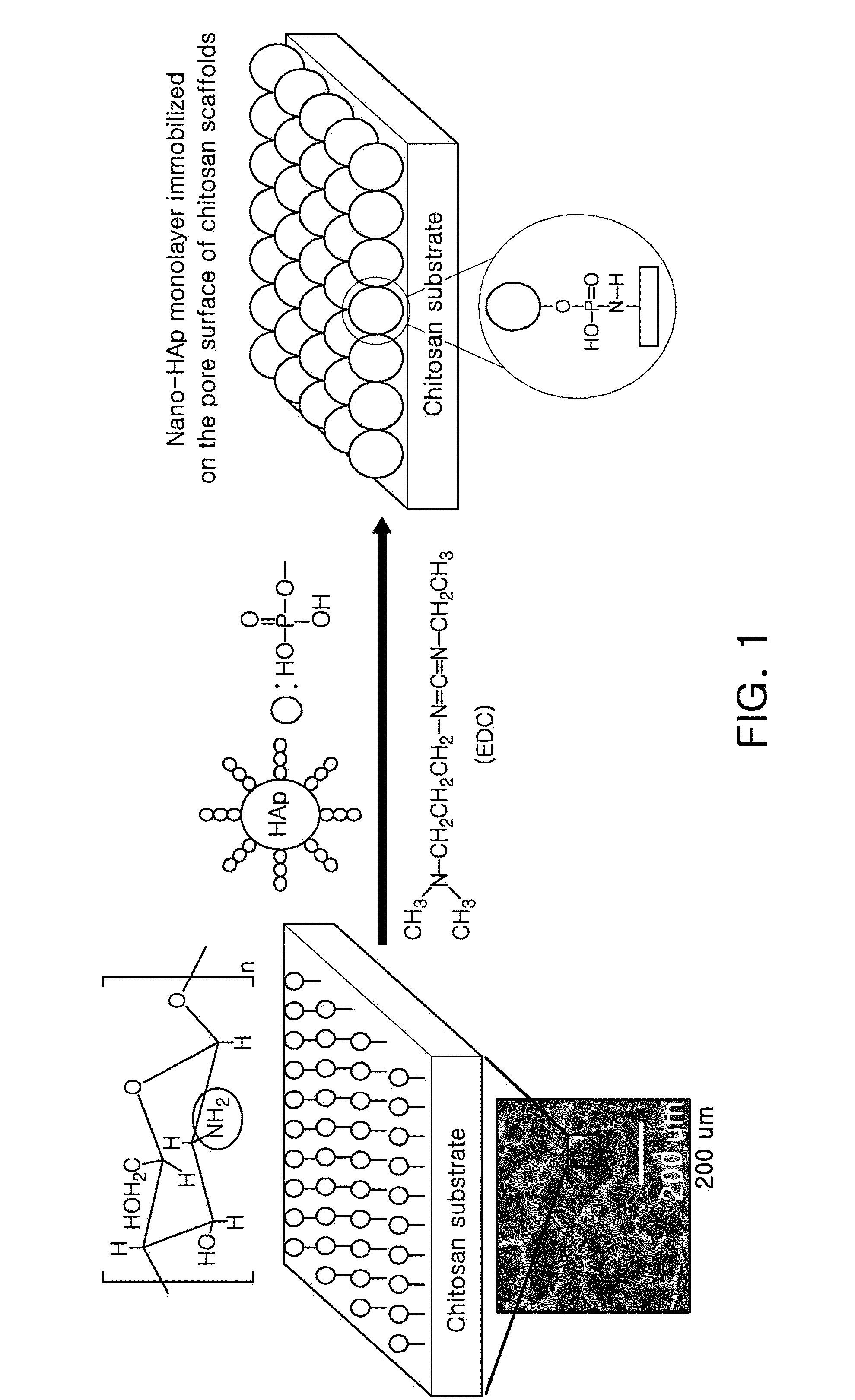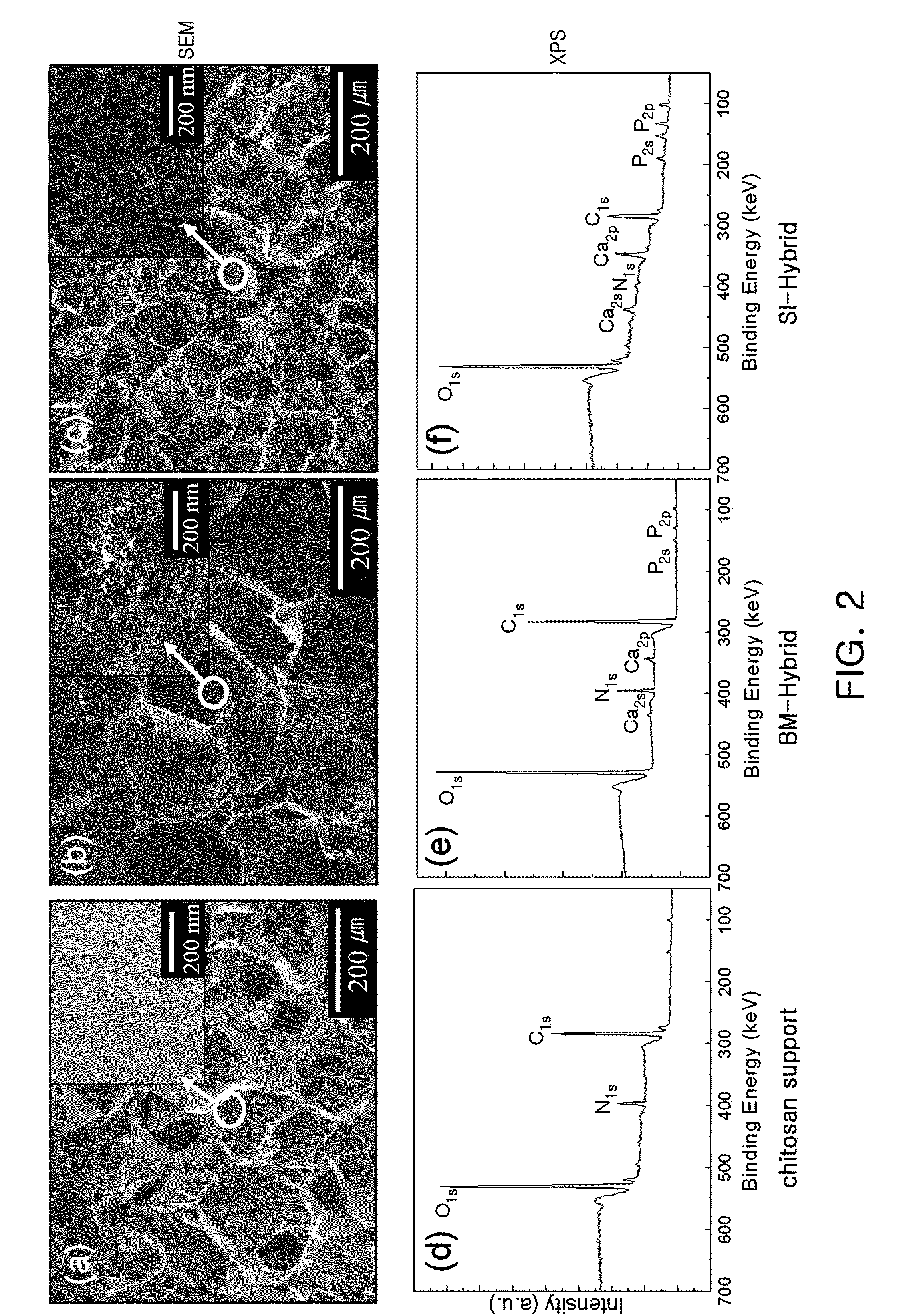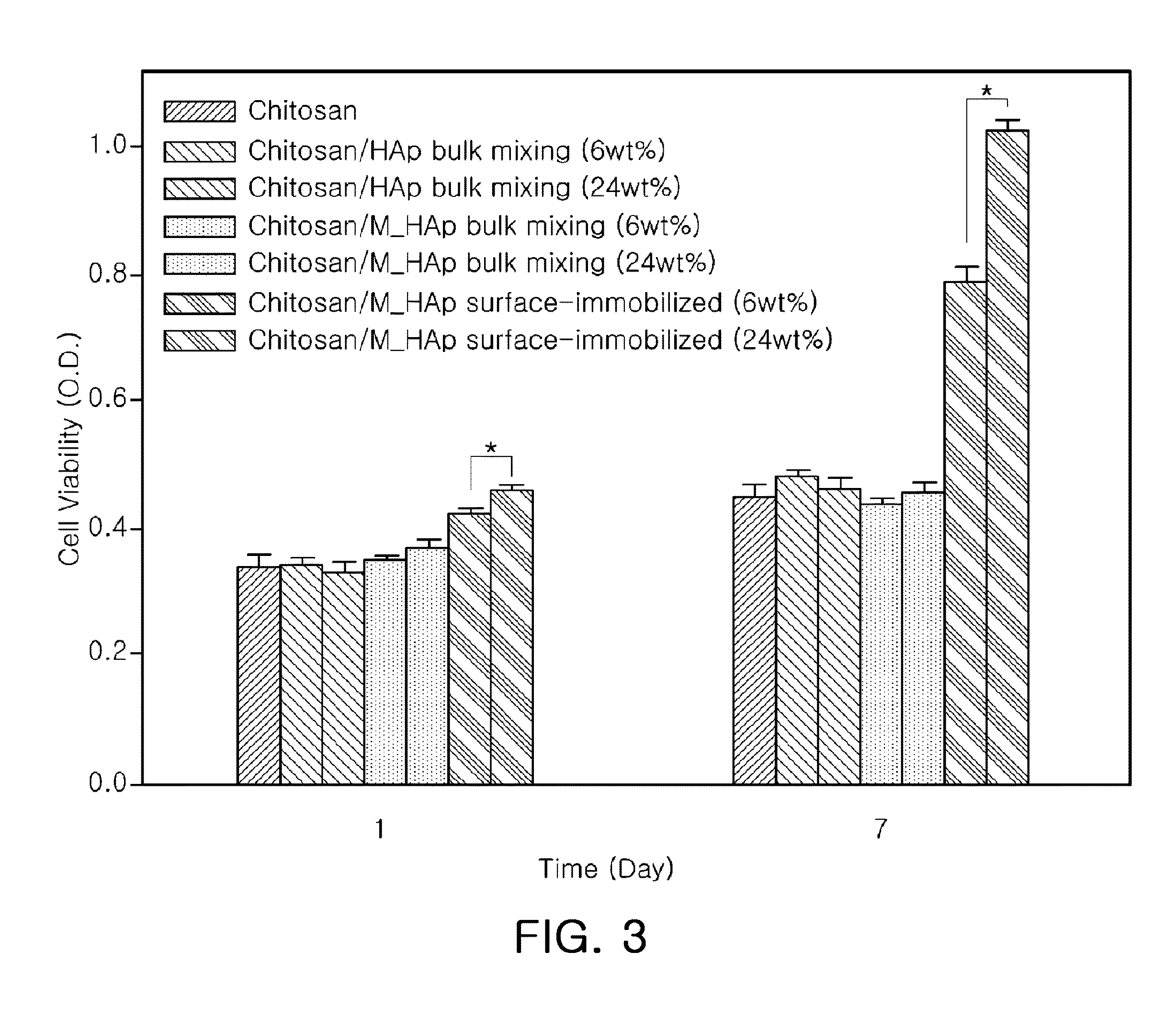Organic-inorganic hybrid scaffolds with surface-immobilized nano-hydroxyapatite and preparation method thereof
a nano-hydroxyapatite, organic-inorganic technology, applied in the preparation of glue/gelatin, peptides, prosthesis, etc., can solve the problems of inability to stably immobilize the surface of the biopolymer via chemical bonding or physical adhesion, and the conventional method is difficult to apply to the exposure of nano-hydroxyapatite at a nano level on porous scaffold surfaces, etc., to achieve high surface reactivity and high colloidal stability
- Summary
- Abstract
- Description
- Claims
- Application Information
AI Technical Summary
Benefits of technology
Problems solved by technology
Method used
Image
Examples
preparation example 1
Preparation of Nano-Hydroxyapatite Having Surface Modified with Poly(ethylene glycol methacrylate phosphate) (PolyEGMP-HAp)
[0024]1. Preparation of Nano-Hydroxyapatite Having Thiol Groups Introduced onto the Surface Thereof (HAp-SH)
[0025]Nano-hydroxyapatite with thiol groups introduced to the surface thereof was prepared using a hydrothermal method. 0.25 M of calcium hydroxide (Ca(OH)2) was uniformly dissolved at 60° C. in 600 mL of distilled water. To 300 mL of distilled water were simultaneously added 0.3 M of phosphoric acid (H3PO4) and 0.047 M of 3-mercaptopropionic acid (HSCH2CH2CO2H) followed by mixing. The homogenous mixture was dropwise added at a rate of 1 mL per min to the aqueous calcium hydroxide solution. Afterwards, the pH of the resulting reaction mixture was adjusted to 7 with 0.1 N NaOH. The neutralized mixture was washed five times with distilled water by centrifugation at a speed of 2500 rpm for 20 min. Thereafter, freeze-drying for 48 hours results in nano-hydroxy...
##tion example 2
PREPPARATION EXAMPLE 2
Preparation of Porous Chitosan Support
[0028]An aqueous chitosan solution (3 wt %) was prepared with a 2% acetic acid solution (10 mL). The chitosan solution was placed in a cylindrical Teflon mold (diameter: 13 mm, thickness: 12 mm) and frozen at −20° C. for 24 hours in a freezer to afford a cylindrical chitosan support, having a size of 12×3 mm, for cell culture. This chitosan support was immersed for 24 hours in 1 N sodium hydroxide to neutralize remaining acetic acid, and washed with distilled water.
example 1
Preparation of Porous Chitosan Scaffold with Nano-Hydroxyapatite Immobilized to the Surface Thereof [SI-Hybrid]
[0029]Mixtures of the surface-modified nano-hydroxyapatite prepared in Preparation Example 1 and the porous chitosan support prepared in Preparation Example 2 at various weight:ratios (10:0, 7:3, 3:7) were dispersed in distilled water (2 mL). The dispersions were sonicated for 30 min in a bath-type ultrasonicator and the pH values of the resulting homogeneous dispersions were adjusted into 5.8. To the homogeneous dispersions was added EDC (1-ethyl-3-dimethylaminopropyl carbodiimide). After reaction for 48 hours, the resulting supports were washed many times with distilled water. Freeze-drying for 48 hours afforded porous chitosan scaffolds with nano-hydroxyapatite immobilized to the surface thereof (SI-Hybrid).
[0030]The mechanism of immobilizing the surface-modified nano-hydroxyapatite onto the surface of porous chitosan is illustrated in FIG. 1.
PUM
| Property | Measurement | Unit |
|---|---|---|
| size | aaaaa | aaaaa |
| size | aaaaa | aaaaa |
| density | aaaaa | aaaaa |
Abstract
Description
Claims
Application Information
 Login to View More
Login to View More - R&D
- Intellectual Property
- Life Sciences
- Materials
- Tech Scout
- Unparalleled Data Quality
- Higher Quality Content
- 60% Fewer Hallucinations
Browse by: Latest US Patents, China's latest patents, Technical Efficacy Thesaurus, Application Domain, Technology Topic, Popular Technical Reports.
© 2025 PatSnap. All rights reserved.Legal|Privacy policy|Modern Slavery Act Transparency Statement|Sitemap|About US| Contact US: help@patsnap.com



